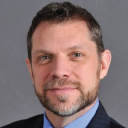The programmatic content of the Council on Foundations’ annual conference ended with a fine plenary on diversity, equity and inclusion in U.S. philanthropy. Council Board Javier Soto of the Miami Foundation introduced the session by stressing the vital importance of foundations to not only consider their ‘external’ behaviors such as grantmaking; ‘internal’ behaviors are essential as well, and diversity, equity and inclusion are a key part of this.
Stephen Heintz of the Rockefeller Brothers Fund spoke first, inviting participants to imagine a philanthropy that achieves lasting impact by drawing on the power of diverse staffs and boards; one that forges genuine partnerships with diverse communities; and one that increases access to opportunities and resources. Stephen then introduced the work of the D5 Coalition, the sponsor of this session. Launched in 2011 as a five-year initiative, D5 was created based on a belief among its founders that, for U.S. philanthropy to have legitimacy, it must fully reflect the communities it serves. Stephen also stressed the fact that research has time and again shown that diverse groups are more creative, make better decisions, and are overall more effective than homogeneous groups. While valued and strategic, though, diversity, equity and inclusion is very difficult work.
Stephen introduced the original goals of D5, which included increasing diversity of leadership within U.S. philanthropy, accelerating more funding from philanthropy to diverse communities, and improving data collection on diversity and better sharing it. Stephen shared his pride in what has been accomplished, including new tools and the enabling of numerous conversations within philanthropy on diversity, equity and inclusion. Still, so much more needs to be done.
Robert Ross of the California Endowment, another of D5’s leaders, spoke next, offering an assessment of the coalition’s success. His punchline: ‘It’s complicated’, with D5’s results showing some inspiring pockets of success along with some serious frustrations. The good news: U.S. philanthropy used to not have good data on diversity and inclusion. Thanks to D5 and partners like the Foundation Center and Guidestar, such data has gotten much better, with more and more foundations reporting on this topic. Another gain: conversations in the field are deepening and spreading, including within the many regional associations and other philanthropic networks that comprise the U.S.’s very large philanthropic support infrastructure.
Unfortunately, though, the numbers just aren’t moving. While people of color have come into leadership at some major U.S. foundations, including at Ford, Kellogg, and Mellon, overall the numbers over the past five years have basically remained flat, including at both the program officer and CEO levels. Especially problematic: philanthropy has lagged behind the corporate sector when it comes to hiring people of color. With regard to women, the numbers here are also generally flat, though in this case philanthropy does better than the corporate sector. Unfortunately, we don’t yet have good data on diversity at the trustee level, a real gap.
Luz Vega-Marquis of the Marguerite Casey Foundation, another D5 leader, spoke next, focused on what’s next. She noted that demographics in the U.S. are changing so fast that philanthropy simply can no longer ignore diversity, equity and inclusion: Today in the U.S., more than half the population under five years of age is people of color, and a Latino in America turns 18 every 30 seconds. Philanthropy should not be on the sidelines on these issues; in fact, we must be leaders on them.
The second half of the plenary featured four presenters sharing their stories on diversity, equity and inclusion. All were inspiring, but Charlotte Vuyiswa McClain-Nhlapo, Global Disability Advisor to the World Bank, was especially moving in her discussion of people with disabilities and the urgent need to include this tremendously marginalized community in our diversity, equity and inclusion work. She noted that 15 per cent of people on the planet have a disability and that this figure is rising. Some 80 per cent of people with disabilities live in the developing world, where many live in rural areas where they lack even the most basic services. She stressed the need to enable spaces for people with disabilities to live and thrive—in the workplace, in terms of services for them, and in the physical space as well. Doing so not only advances the rights and well-being of people with disabilities: Studies show that, where such efforts are made, society as a whole becomes more caring.
The conversation on this excellent session continued afterwards on Twitter, at #DEI4all.
John Harvey is an independent global philanthropy professional.



Comments (0)